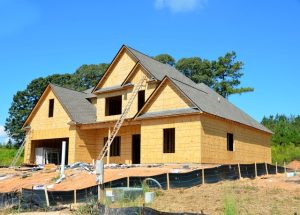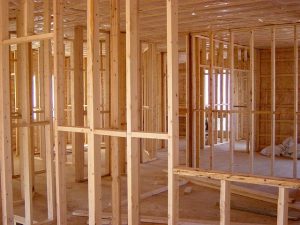What Materials Are Commonly Used to Build Houses?
Building a house is an intricate process that involves various materials, each serving a specific purpose in the construction. From the foundation to the roof, different materials are used to ensure structural integrity, durability, and aesthetic appeal. Let’s explore some of the most commonly used materials in house construction. What materials are commonly used to build houses?
1. Concrete:
Concrete is one of the fundamental materials used in constructing houses. It is composed of cement, water, sand, and aggregate. Concrete offers excellent compressive strength and durability, making it ideal for building foundations, walls, and floors. It can be molded into various shapes and sizes, providing flexibility in design.
Reinforced concrete, which incorporates steel reinforcement bars (rebar), adds tensile strength to the material. This combination is commonly used for structural elements such as beams, columns, and slabs, providing increased stability and load-bearing capacity.
2. Bricks:
Bricks have been used in construction for centuries due to their durability and aesthetic appeal. Made from clay or concrete materials, bricks are versatile and can be used for both load-bearing and non-load-bearing walls. They provide excellent thermal insulation and soundproofing, making them popular choices for residential construction.
Bricks come in different sizes and shapes, including standard bricks, modular bricks, and specialized bricks like facing bricks for external walls. They are often laid using mortar, creating a strong bond between individual bricks and enhancing the structural integrity of the wall.
3. Wood:
Wood has been a traditional building material for centuries and continues to be widely used due to its versatility and natural beauty. It is commonly used for structural frames, such as wall studs, roof trusses, and floor joists. Wood offers good insulation properties and is relatively easy to work with, allowing for flexibility in design.
There are various types of wood used in house construction, including softwoods like pine and hardwoods like oak. Softwoods are commonly used for framing, while hardwoods are utilized for decorative elements, flooring, and cabinetry. It is important to properly treat and maintain wood to protect it from moisture, pests, and decay.
4. Steel:
Steel is a versatile material that offers high strength and durability, making it suitable for various applications in house construction. It is commonly used for structural frames, roofing, and reinforcement. Steel frames provide excellent structural stability and can withstand extreme weather conditions.
Steel roofing systems are known for their longevity and resistance to fire, rot, and pests. Additionally, steel reinforcement is used in concrete structures to enhance their strength and load-bearing capacity.

5. Roofing Materials:
Roofing materials play a crucial role in protecting the house from external elements. Common roofing materials include asphalt shingles, metal, clay or concrete tiles, and slate. Each material has its own advantages and aesthetic appeal.
Asphalt shingles are the most commonly used roofing material due to their affordability, ease of installation, and versatility. Metal roofs offer excellent durability and energy efficiency. Clay or concrete tiles provide a classic and elegant look, while slate offers a high-end, natural appearance.
6. Insulation Materials:
Insulation is essential for maintaining a comfortable indoor environment and reducing energy consumption in houses. Various insulation materials are used to prevent heat transfer and minimize thermal conductivity.
Common insulation materials include fiberglass, mineral wool, cellulose, and foam. Fiberglass insulation consists of fine glass fibers and is known for its excellent thermal and acoustic insulation properties. Mineral wool, made from natural or recycled materials, offers similar benefits and is fire-resistant. Cellulose insulation, derived from recycled paper, provides effective thermal and sound insulation. Foam insulation, such as expanded polystyrene (EPS) or polyurethane foam, offers high thermal resistance and is commonly used in walls, roofs, and foundations.
7. Windows and Doors:
Windows and doors not only provide access and ventilation but also contribute to the overall aesthetics and energy efficiency of a house. Common materials used for windows and doors include wood, vinyl, aluminum, and fiberglass. What materials are commonly used to build houses?
Wooden windows and doors offer a classic and natural look. They provide good insulation but require regular maintenance. Vinyl windows and doors are low-maintenance, energy-efficient, and offer good insulation properties. Aluminum windows and doors are durable, lightweight, and resistant to corrosion, but they conduct heat and cold more easily. Fiberglass windows and doors combine strength, durability, and excellent insulation.
8. Finishing Materials:
Finishing materials are used to enhance the aesthetics and functionality of the interior and exterior of a house. These materials include paints, tiles, flooring, and countertops.
Paints are used to add color and protect surfaces. They are available in various types, such as latex, oil-based, and enamel paints, each with its own advantages and suitable applications. Tiles are commonly used for bathrooms, kitchens, and floors due to their durability, water resistance, and design options. Flooring materials range from hardwood and laminate to ceramic tiles and vinyl, offering different aesthetics and durability levels. Countertops can be made from materials like granite, marble, quartz, or laminate, providing both functionality and style.

Conclusion
Building a house requires careful consideration of various materials to ensure a safe, durable, and aesthetically pleasing structure. Concrete, bricks, wood, steel, and roofing materials are essential components of the construction process. Insulation materials help maintain a comfortable indoor environment, while windows and doors contribute to energy efficiency. Finishing materials add the final touches to the house, enhancing its visual appeal and functionality.
By understanding the characteristics and applications of these commonly used materials, homeowners and builders can make informed decisions to create houses that meet their specific needs and preferences. The choice of materials should consider factors such as climate, budget, sustainability, and local building codes to ensure a successful and lasting construction project. https://nazbuild.com.au/builder-in-sunshine-coast/

